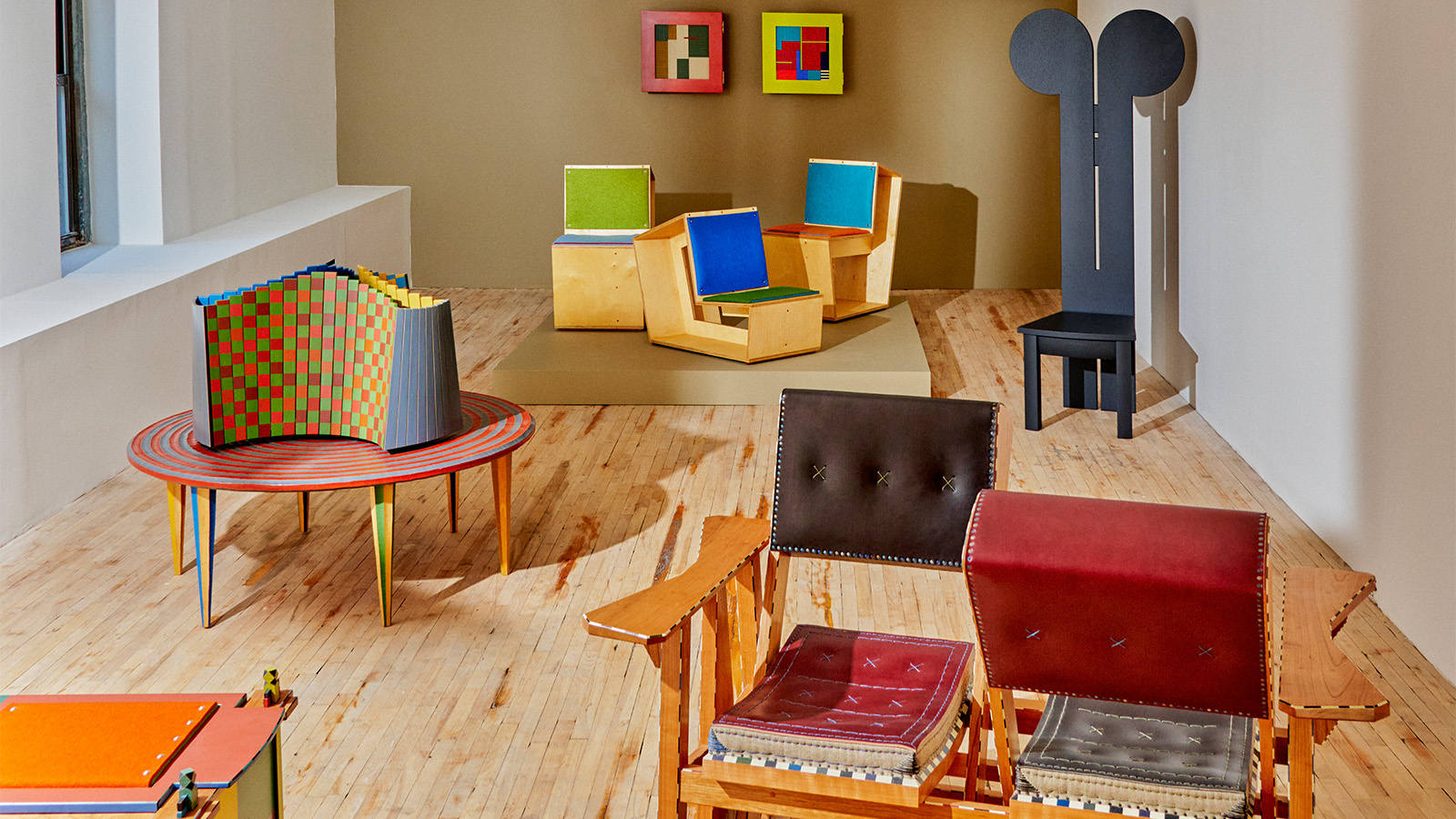
‘I’m slow now, making things take much longer,’ confides artist and furniture designer Wendy Maruyama while rummaging through several pieces in varying degrees of completion strewn throughout her studio in San Diego, California–containers, cabinets, sideboards, “and a few little boxes.” Each vibrantly varnished assemblage is intended for 'Colorama', a two-person show now on at New York City design gallery Superhouse pairing Maruyama with longtime friend and chromatic furniture making compatriot, Tom Loeser.
'Colorama' by Wendy Maruyama and Tom Loeser

The confession is bemusing, coming from the artist who once fabricated 120,000 unique paper identification tags, each representing individual Japanese American internees forcibly removed from their homes and incarcerated into camps by Executive Order 9066 during World War II, a staggering visual representation of collective trauma. More recently, the 72-year artist took on the massive undertaking of gathering archival pieces spanning decades while creating new work for her own retrospective for the Fresno Art Museum’s 'Wendy Maruyama: A Sculptural Survey' exhibition.
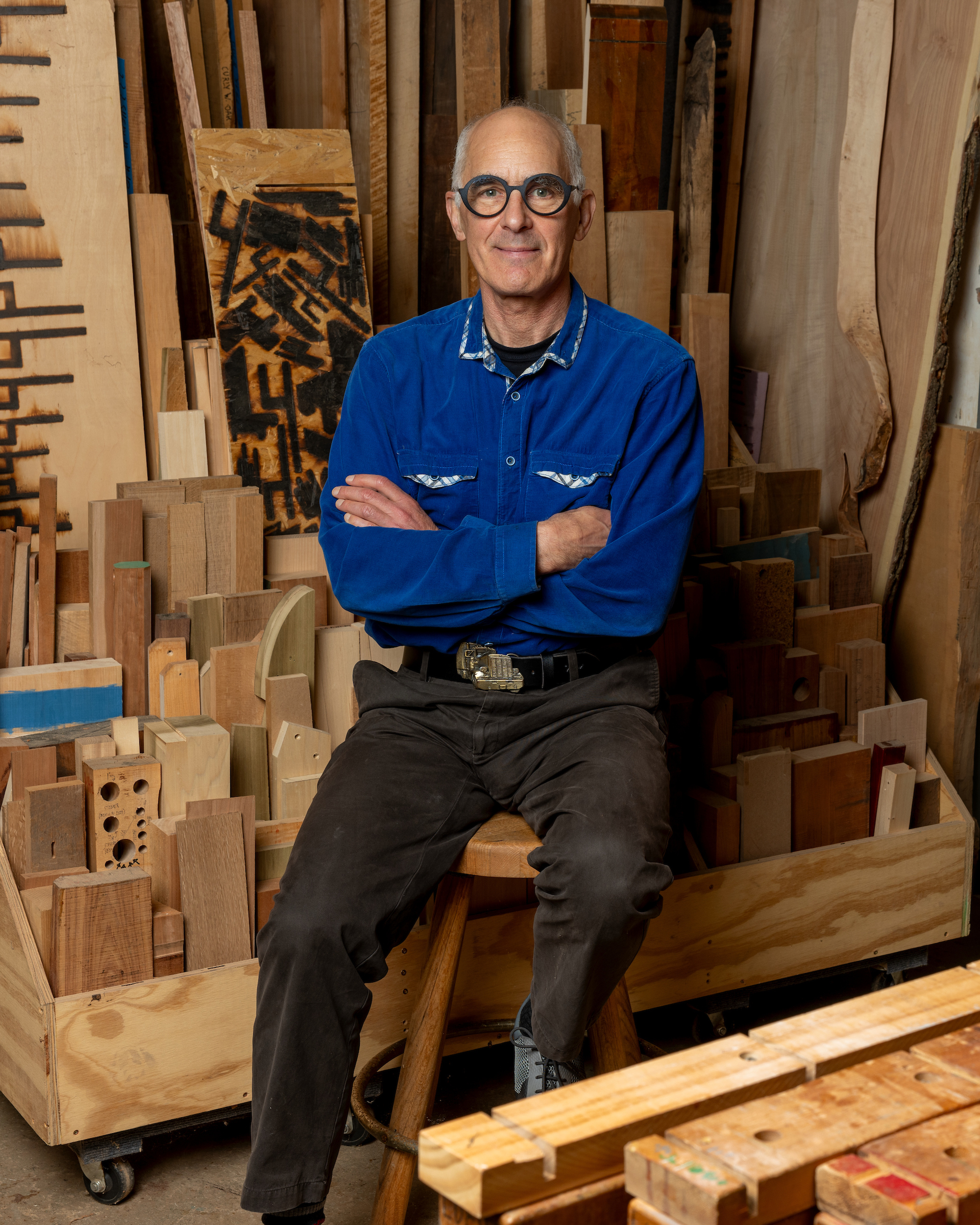
‘To be honest, the timing for 'Colorama' couldn't have been worse, only because I just finished preparing for a solo show that includes 50 years’ worth…everything I made from 1972 to 2020, plus they asked for new work!’
Few woodworkers walk the fine line between craft and commentary as poignantly and defiantly as Maruyama has over the span of over four decades. Rising from the predominantly masculine world of studio furniture and woodworking, Maruyama would go onto become a pioneer (and also later an educator), consistently defying classification, sidestepping labels and clichés during a time when women, let alone a Japanese American woman, were uncommon and sometimes unwelcome within the world of furniture making.
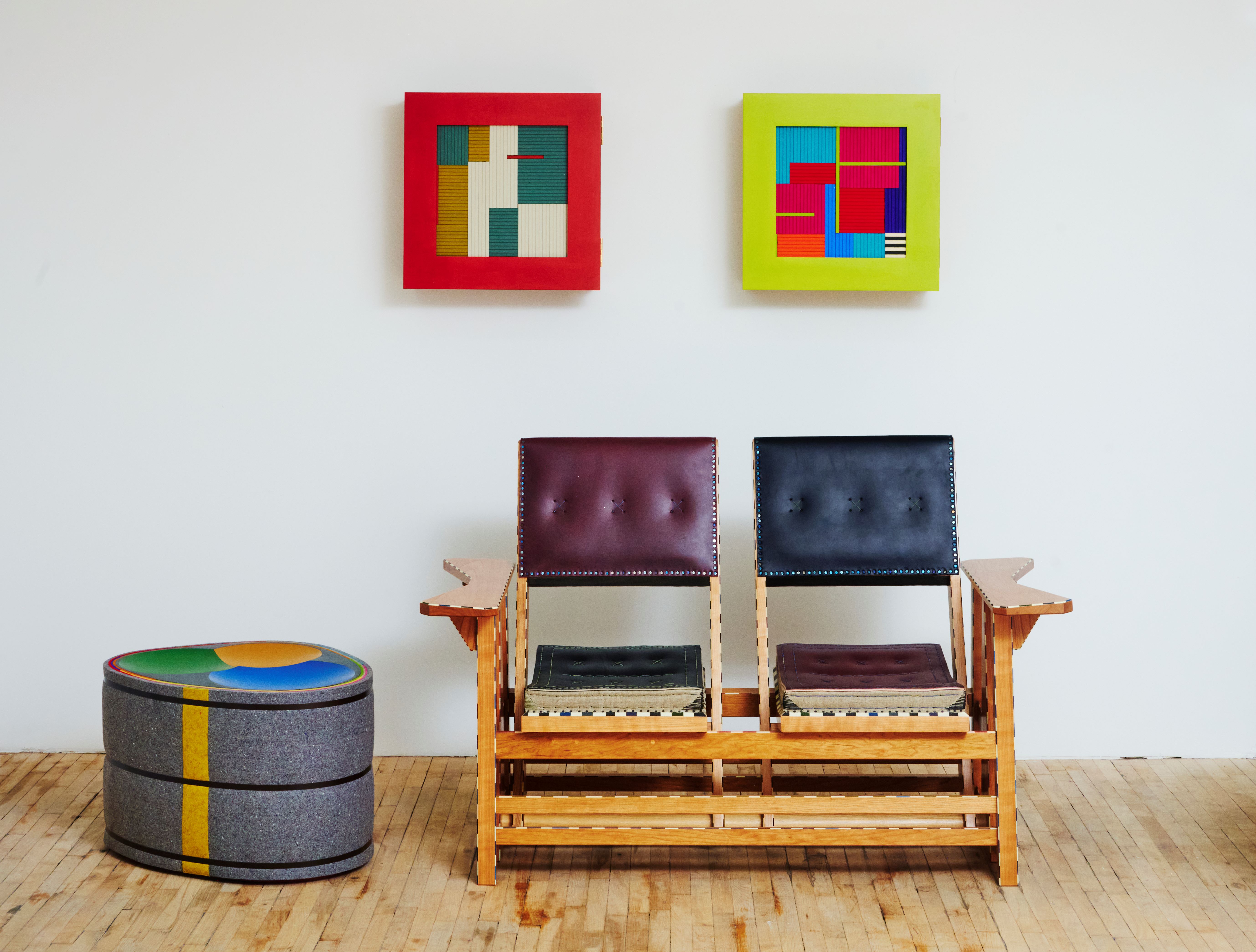
While Maruyama isn’t quick to embrace the label of feminist, she is more receptive to that of a rebel, acknowledging a life coloured by acts of defiance from childhood forward. ‘I always knew I wanted to make furniture, just not traditional furniture, but weird furniture,’ says Maruyama, ‘And I don’t always make furniture. If I want to make an artful piece about my aunt’s memory, I will divert my energy toward that.’
She goes on to further explain, ’When my favourite aunt was diagnosed with dementia, I thought a lot about urushi, Japanese black lacquer. I had studied urushi many years ago and was always taken by the depth of those finishes; it's reflective but it looks like you are looking into a black hole.' Using black lacquered finishes, Maruyama found a spectral distorted reflection analogous to the loss of memory associated with the medical condition.
'I wanted to make furniture, just not traditional furniture, but weird furniture,'
Wendy Maruyama
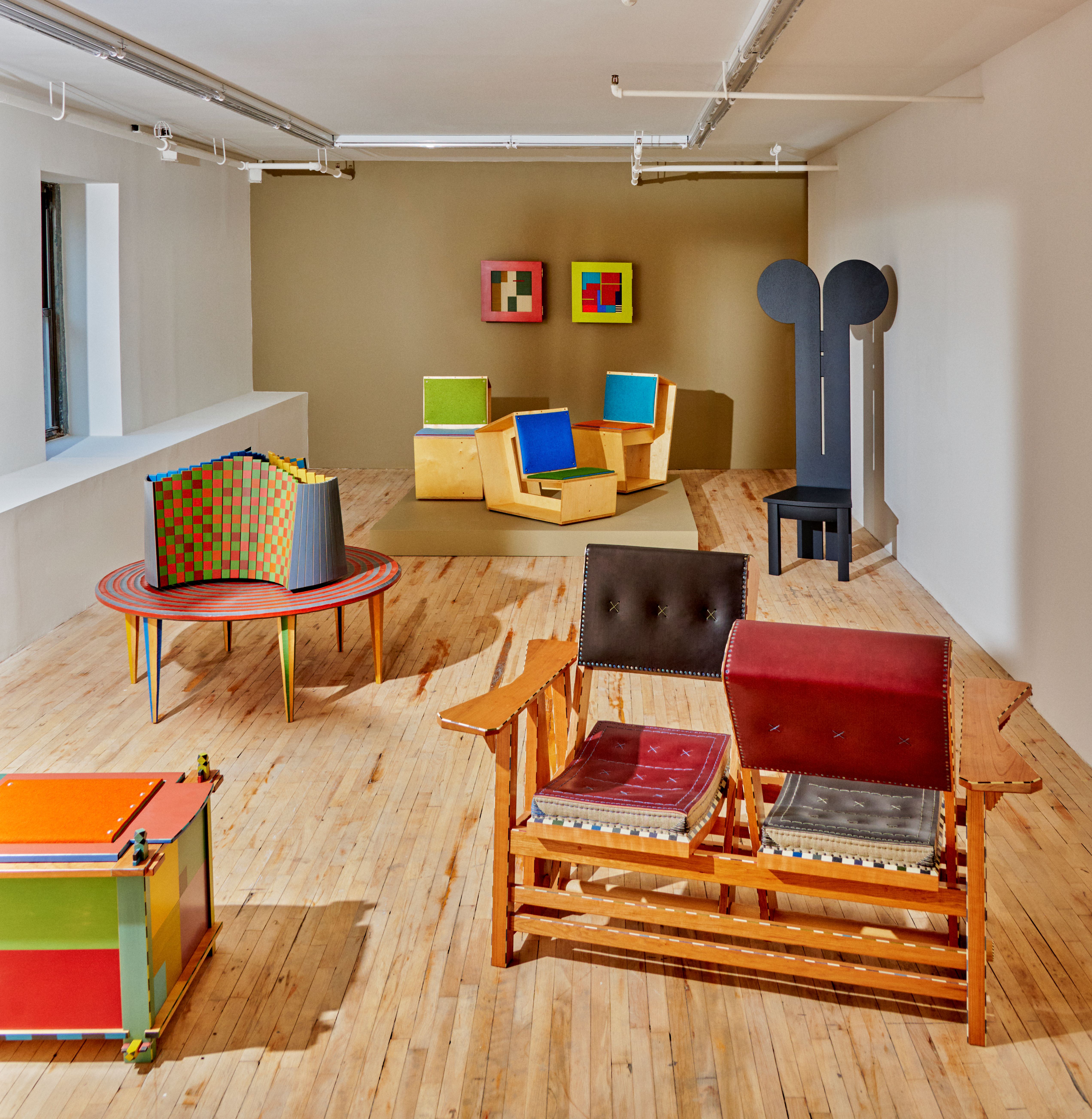
But for 'Colorama' Maruyama decided to veer away from the darker depths of those painful memories and toward more colourful expressions reflective of her own perspective of life today. A pair of panelled medicine cabinets–Rx and With Salt or Without– each housing divided storage sections within, reflect not just practical function, but also the fragmented nature of memory and time. 'I am not exactly sure how I came to gravitate towards bright cheery colours when thinking about this loss,’ Maruyama says. 'I intentionally wanted to use uplifting forms and colours for the series - maybe as a glimmer of home amidst all the pain of loss.'

‘My cabinets are broken up kind of non-traditionally,' she explains, touching on her deeply personal approach to the craft. 'In some ways they are like 3-dimensional paintings with a secondary function; dioramas, a box that can be opened and reveal a surprise, either in its surface treatment or its contents.’ And that surprise? Maruyama reveals with girlish glee: 'I really love tequila, so I decided I wanted to design something to store my favorite bottles within.'
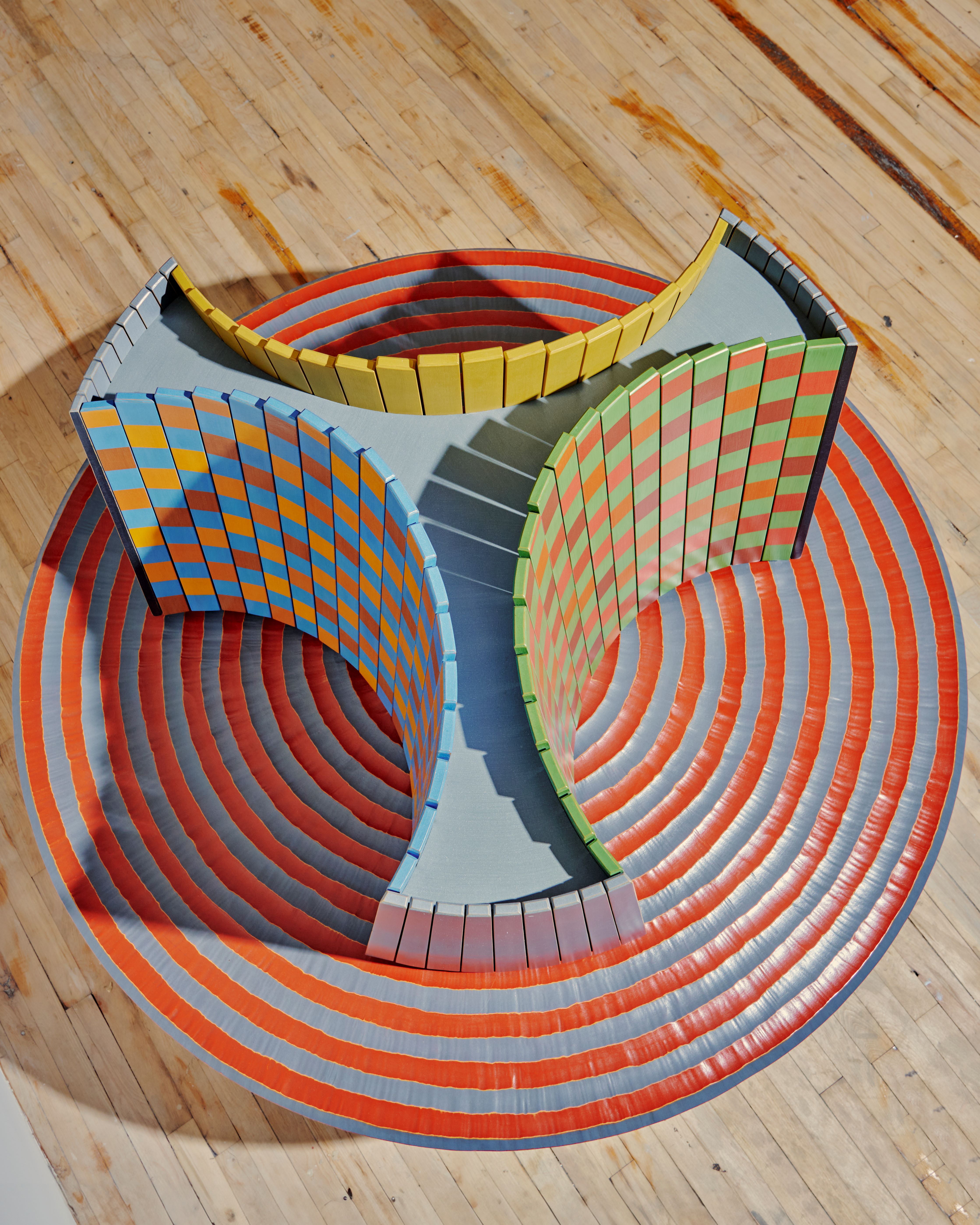
In contrast to Maruyama’s introspective wall-focused pieces, show partner, artist and designer Tom Loeser focuses upon more surface level concerns, specifically the social interactions encouraged by seating. ‘I really think our show together resolved itself amazingly well without us sort of directly planning it,’ Loeser says, 'Wendy focused on the wall, and then looking at my own work I recognized the dominant territory I've enjoyed and explored are different versions of seating. So everything I sent out for 'Colorama' is some exploration of a seating object.’
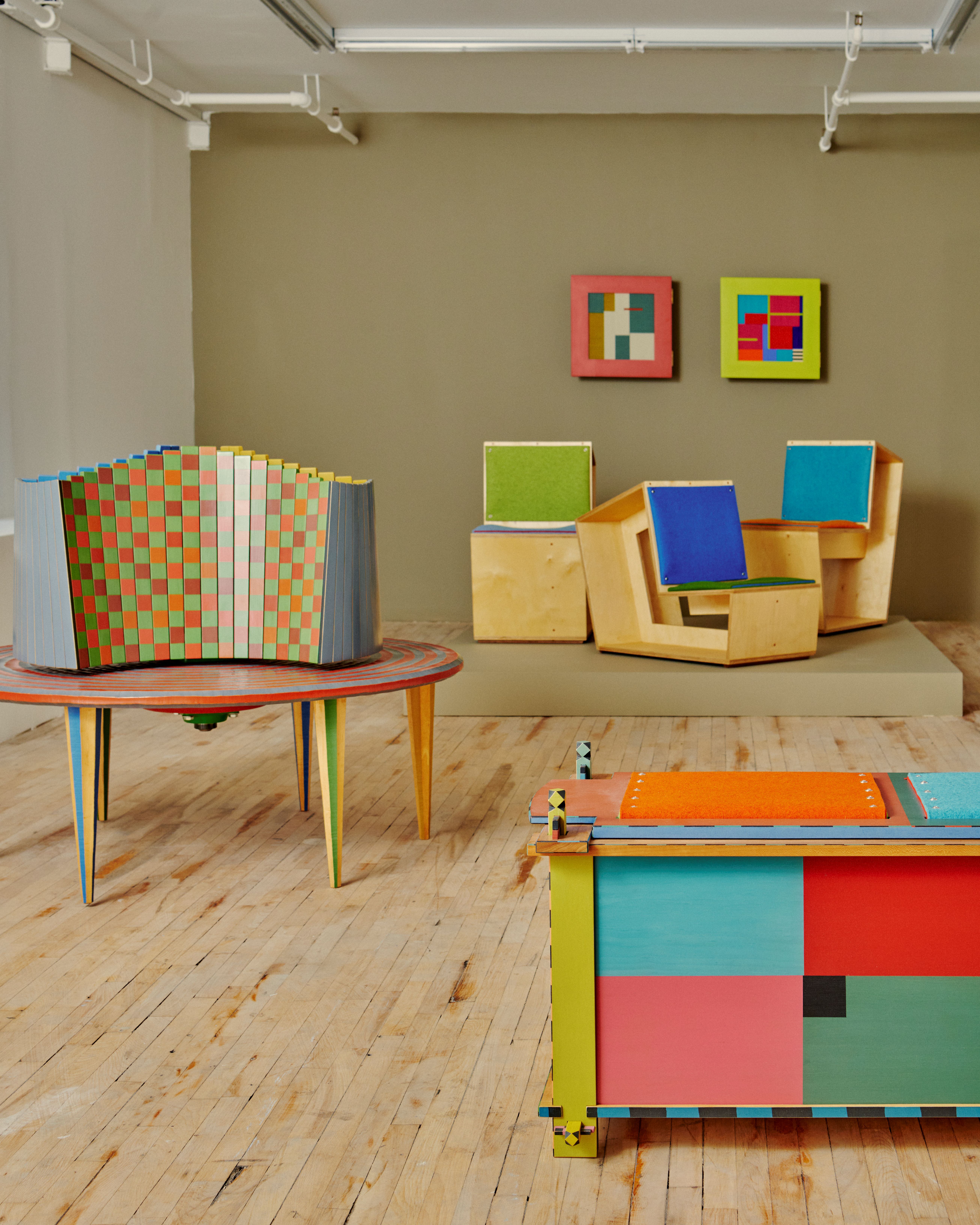
The two are no strangers, having exhibited together numerous times, with a history stretching back to their earliest days as young graduates. At the time Loeser was already gravitating toward more exploratory horizons inspired by Italy’s Memphis Group’s polychromatic non-conformist furniture around that time when the two designers first met at the Appalachian Center for Crafts. There, Maruyama invited the younger Loeser for a residency where he’d soon adopt a similar exploratory methodology liberated from tradition and fully embracing color, pattern, and texture.
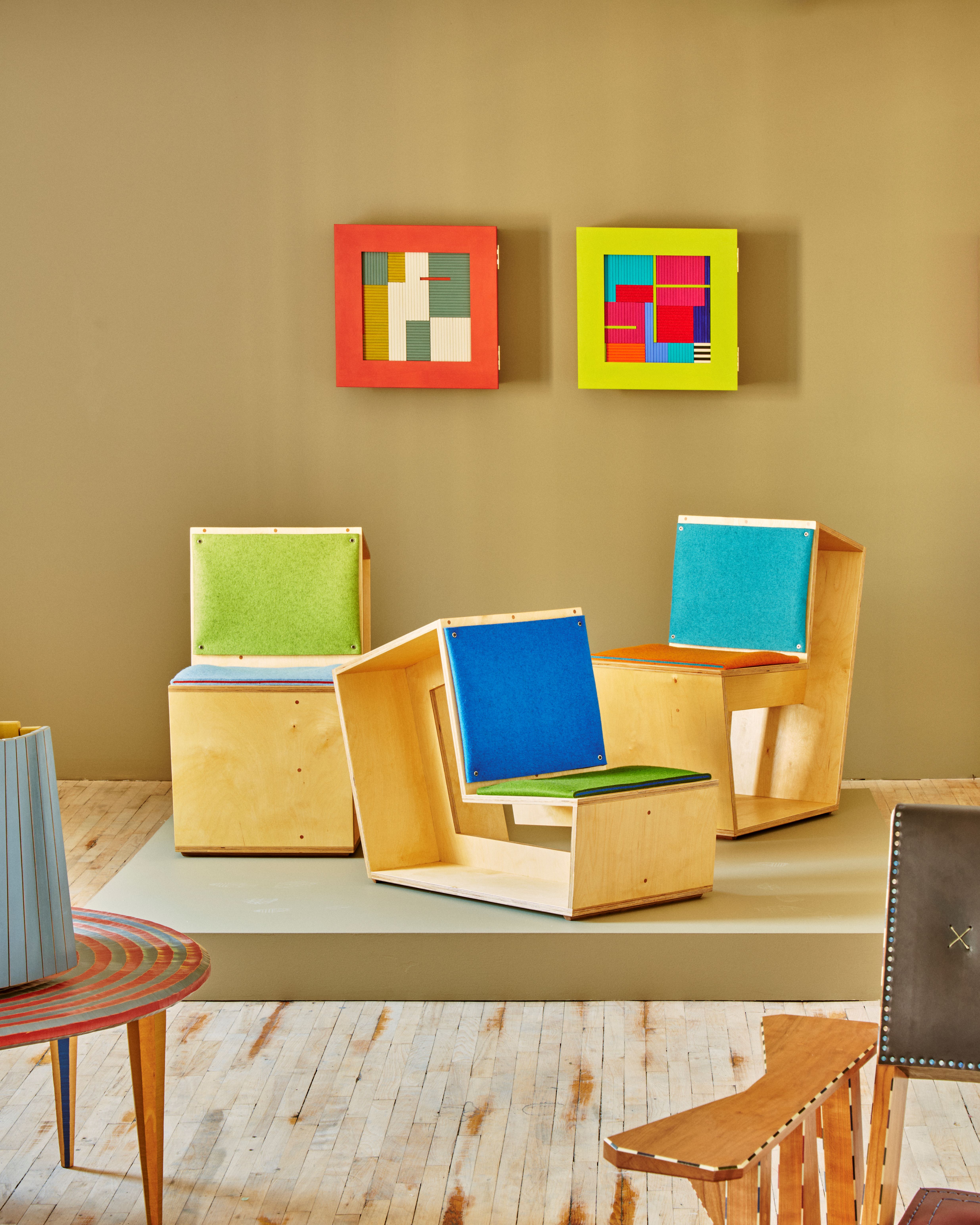
Since then the two have developed what Loeser describes as a ‘friendly rivalry’ spanning decades and distances – Maruyama, in San Diego, California, and Loeser, in Madison, Wisconsin. Their work is regularly exhibited together.
‘We both burst on the studio furniture field in the 1980s and became known for our use of color and paint in our work,’ recollects Maruyama. ‘Back then the use of paint in the furniture field was sort of frowned upon… and still is in some circles!’
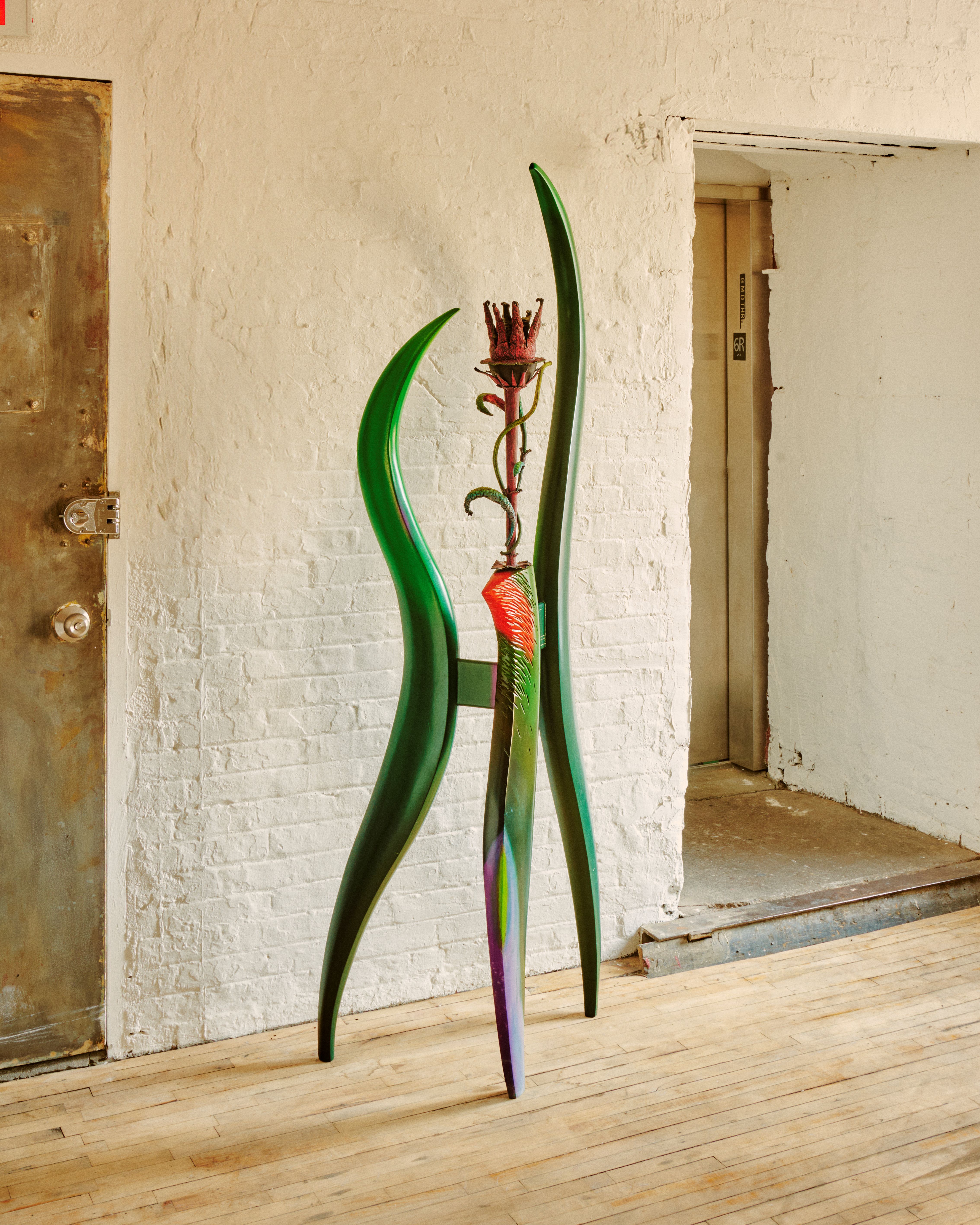
Despite their shared proclivity for colour, Loeser cites their work as being inherently different. 'I think there's a dialog back and forth between the two, parallels, but we’re on different tracks.' Where Maruyama’s colours are more loosely expressive, Loeser sees his use of colour and pattern as a controlled method of clarifying structure, edges, and planes. 'People describe my work as whimsical, but I've never loved that because conceptually what I'm trying to do in my mind is serious and subversive.'
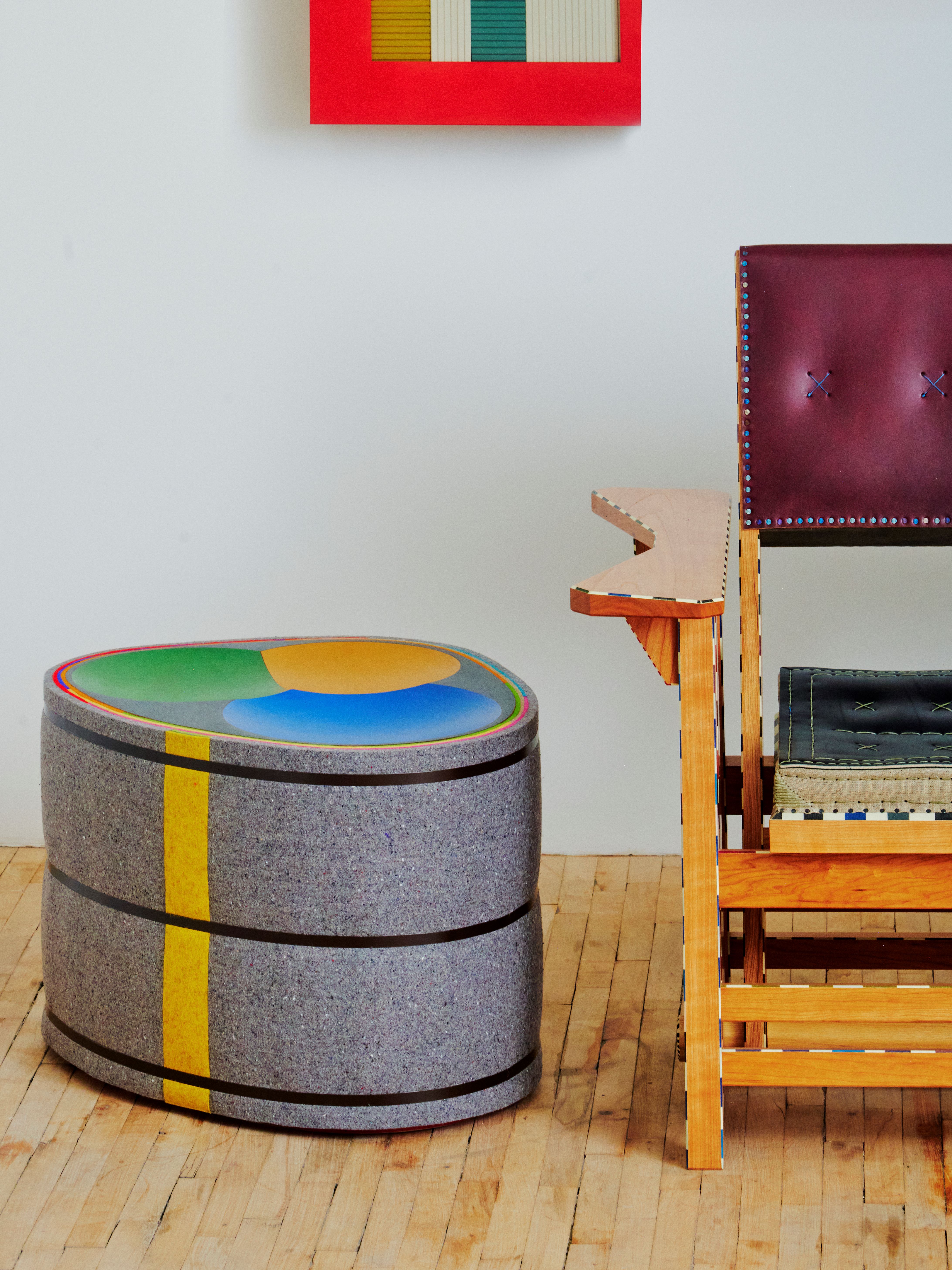
For Maruyama, being invited to assemble new work for 'Colorama' proved cathartic. In the span of the last three years the artist shared that she lost her father, two favourite aunts, two close friends, and her dog.
‘I didn't care how these pieces were made, or even how well they were made. They just came together, cobbled together in bits and pieces, coloured with whatever paints, crayons or pencils that I had on hand. It was freeing, actually.’







